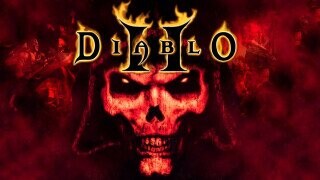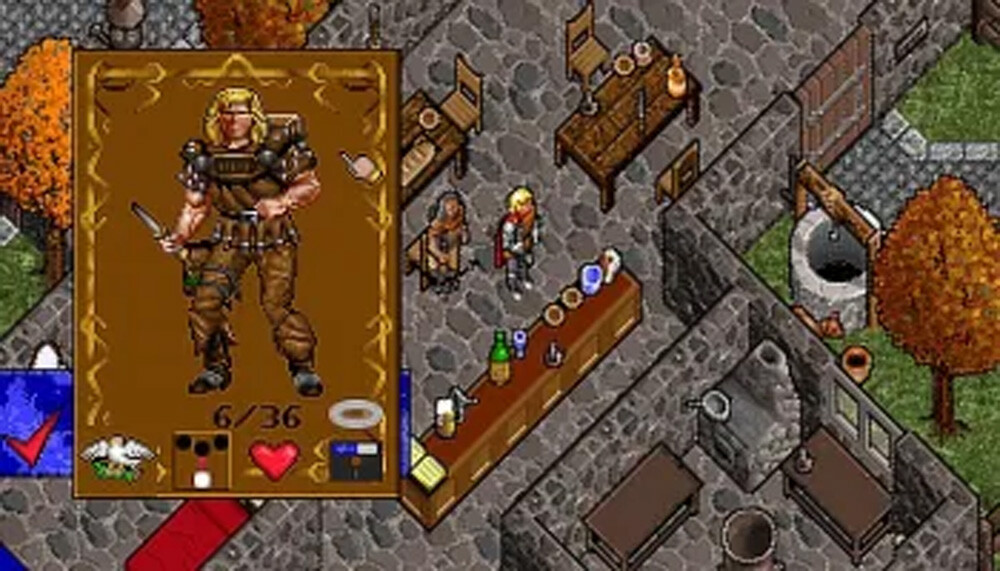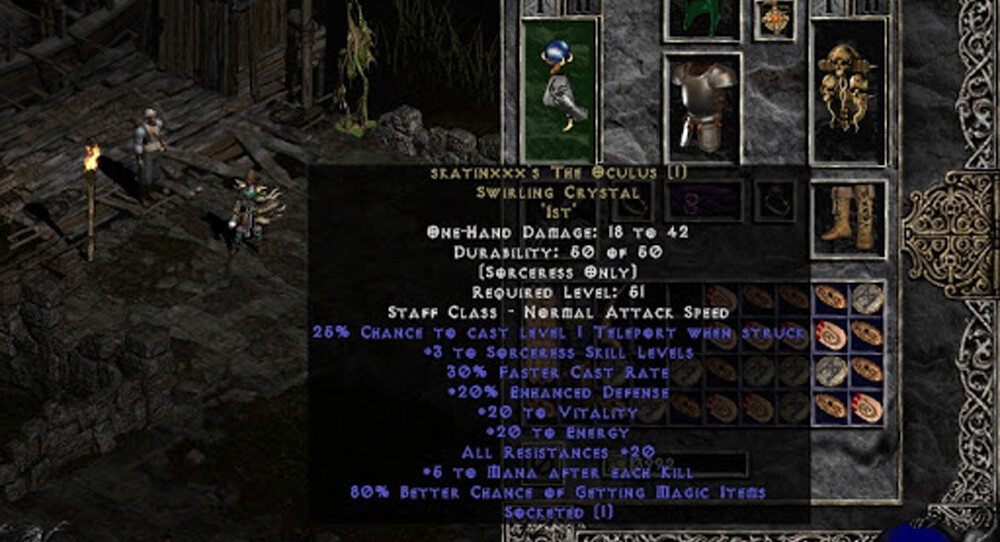4 Ways 'Diablo II' Changed Gaming Forever

Even if you're not a die-hard gamer, there's one thing you know about every video game: bigger numbers are better. Having a +3 Greatsword is better than having a +1 Greatsword; my level 60 character will dominate your level 20 character, and your 10 hours of Candy Crush is embarrassing compared to my 10,000.
So the hype around Diablo II: Resurrected might have you scratching your head. After all, Diablo III is already out. III is bigger than II! And not only that -- Diablo IV is on the way! And IV is two IIs! If I'm going to get excited about a game, it better have a big number at the end, like NBA 2k21. Why would I go back to Diablo IV when I can already play the sequel?

343 Industries
The bigger number in Diablo III is less like a weapon-upgrade number and more like a sequel number. It's not a +3 sword -- it's Rocky 3. Not bad! Not unenjoyable. But also not the reason that the franchise is a household name.
Don't Miss
There are a lot of games that end up on "greatest video games of all time" lists. Mario. Sonic. That pinball game that used to come standard on Windows. But the real test of a game's greatness is how much it was ripped off by other successful games. And Diablo II is maybe the most ripped-off game of all time. Its world, character customization, items, and gameplay loop became the standard for its genre, and some of its ideas have become the backbone of modern gaming.
Action Fantasy Settings
Before Diablo II:
Things in the past were generally much worse, and action RPGs were no exception. The majority of fantasy action RPGs were about slowly and methodically working your way through a dungeon one room at a time. The designs were all roughly the same -- hewn granite walls, bright green goblins, and bad guys doing their best Conan impressions.

Origin Systems
There were only really two kinds of areas -- the safe zones of your home base and the treacherous dungeon areas where monsters spawned. If you wanted to fight monsters, you'd have to go to the farthest room you'd reached. There was rarely any benefit to backtracking. Games like Gauntlet and the original Diablo didn't afford players options about where to go -- just into the next room or deeper into the dungeon.
The worlds of these games were also almost always the same -- the medieval European setting we've all seen a hundred times. You know for a fact that the peasants in action RPG got jobs as extras in Dungeons and Dragons games.
In Diablo II:
The varied settings of Diablo II were revolutionary for the genre. Gone were the claustrophobic hallways of Gauntlet, replaced by huge open fields, mountains, and jungles. Even though Diablo II starts in fantasy's traditional medieval European setting, it moves all over a world which pulls inspiration from ancient Egypt and Central American civilizations

Blizzard
Rather than continual nighttime, Diablo II had daytime settings, nighttime settings, and even a twilight jungle setting. Compared to the cartoonish '80s lighting and colors of its Conan peers, the game had a rich and varied palette that would tell you where you were in the game and brought the dark tone of its music and dialogue to life. Other games told you that the world was a forbidding place, but Diablo II showed you with every single frame.
Rather than a linear progression through a series of more and more difficult rooms, D II involves long walks between plot points and plenty of game time where you're running around looking for the next step in your current quest. Although it falls short of modern open-world games, it took a huge step forward for action RPGs in introducing exploration as a game mechanic.

Blizzard
Diablo has relatively few quests (just six per act, with only five acts), and they usually start very open-endedly. For instance, you might be told to find a character's hammer. The character has a vague sense that they left it in their forge, which was in a monastery (I always go to church to find a hammer), but you'd have to go find the monastery, then figure out where you'd put a hammer inside of it (behind a giant monster, it turns out). D II didn't hold your hand or mark your destination on its minimap; rather, it forced you to run hither and yon, exploring its rogue-like world and drawing the ire of its hordes of monsters.
One of the most surprising choices the game made was where it spawned monsters. Traditionally, monsters spawn in dungeons, just like you were taught in AP Biology. D II kept dungeons around as set pieces spread around its huge overworlds. But unlike other RPGs at the time, monsters would spawn not only in the dungeons but also in the overworld.

Blizzard
Since Diablo II involves a lot of backtracking or exploration in its overworld, you'd often find yourself thinking, "Ya know, I'm a bit low on potions, maybe I should head back to camp," only to be ambushed on your way back by dozens of Medusae and barely escaping with your life. The way monsters spawn sends home the message that this world has been completely overrun by the minions of Hell.
Since Diablo II:
Action RPGs have almost universally adopted the Diablo II style of a series of varied overworlds covered in roving monsters that sit between the major set pieces of the game. From Zelda: Breath of the Wild to the Witcher series, you can expect to be jumped by enterprising gangs of horrors at the drop of a hat.

CD Project Red
Although you can still find plenty of fantasy games set in fantasy dark ages Europe (Skyrim), Diablo II was part of a wave of games that opened up fantasy's horizons pretty significantly. Nowadays, we expect games to take us on a tour of their world and to find at least a few different weather patterns and cultures as we play. The game can't claim to be wholly responsible for this, but it's impossible to deny that it proved you could do more than fight orcs in elaborate basements.
Character Customization
Before Diablo II:
Traditionally, fantasy RPGs would have three or four character classes, each focused on a particular style of play. Maybe you could be a wizard instead of a fighter, but every wizard was basically the same -- a weak geriatric who can shoot painful fireworks. Fighters were for slapping people as hard as you could with swords, clerics were for healing and preaching to zombies, and thieves were the Ringos of the group.

Blizzard
These classes were taken directly from Dungeons and Dragons, which at the time was more limited in its scope, but in video games, they lacked the kind of customization you'd expect from a tabletop RPG. Maybe there would be a handful of flavors of Wizard or Fighter, but once you'd chosen a type, they'd typically stay in their pre-defined lanes, and any Frost Wizard was very like another.
In Diablo II:
The game started with five classes -- nothing too groundbreaking there. However, each class had three unique talent trees that allowed players to deeply customize their characters. Does your barbarian leap onto foes with reckless abandon or dual-wield magical swords? Is your assassin gifted with poisons or traps? Does your geriatric do pyrotechnics or manipulate the weather?

Blizzard
Diablo II wasn't the first game to have a talent tree in it, but it took the sprawling talent systems of JRPGs and pared them down to something that was easy to understand but rewarded meticulous attention to detail. Not only could you choose the talents that you had, but you could also choose how invested you were in any given talent. So many sorceress characters would have the option of shooting a Fire Ball, but some might invest very heavily into them, and some might use them as a stepping stone to get to Enchanting their weapons. Even though the number of talents was in the dozens, the different combinations of talent blends made every character feel completely different.
Since Diablo II:
The talent trees of Diablo II heavily influenced early World of Warcraft -- another little RPG project that Blizzard cooked up. From World of Warcraft, talent trees infiltrated almost every genre of game. From League of Legends to Deus Ex, the way you create a modern video game character is to choose a base and then add your own spice with a talent tree.

Grinding Gear Games
Items
Before Diablo II:
Prior to D II, there were items in video games. Most were standard swords and bows, and some were magical -- giving a bonus to a stat or an extra ability. They were accessories to your character, a small leg up that also built out the world a little bit. Maybe there would be a major item or two that would be game-breakingly powerful, but overall they were minor buffs or silly gimmicks. Nothing too exciting.

BioWare
In Diablo II:
This was when items became king. In a genuine sense, Diablo isn't a game about finding and killing monsters -- it's a game about acquiring the best items. It just so happens that in this world, the best way to do that is to find and kill monsters. Diablo turned loot from cool stuff into genuine treasure, from something that helped you get through the dungeons to the reason that you'd brave them. Sure, there's a pyramid full of poisonous mummies, electric bats, and chitinous beetle demons, but if you get past all that, there's a 10% chance you'll get a really cool helmet.

Blizzard
Items in Diablo II are the biggest way that your character gets more powerful, allowing you to fine-tune the customization you began with your talents. While talents allow you to choose the big things in life ("Are you interested in chain lightning, or are you more of an "army of fire hydras" kinda person?"), items are where you break out the spreadsheets, crunch some numbers and figure out exactly how many fire hydras a single person can possibly produce. (Too many is the answer.)
Items also gave the game its replay value. Most dedicated players would eventually get to the Nightmare or Hell modes of the game and be able to make progress against the juiced-up versions of the early game foes. But by your third time through, there isn't much enjoyment in defeating the vampire Countess. But when your friend shows you the amazing set of Necromancer gear they got, and you realize you're just a few pieces away from having the same, you'll grind a couple extra nights to finish it out. And then maybe you could get the Amazon set ... Okay, well, just one more run. One more ... One more ...

Blizzard
Since Diablo II:
At the time, the items in Diablo II were mind-blowing. Nowadays, you're probably not surprised to hear about them. Oh, they were randomized when they dropped, so every enemy became a little lottery ticket? I've heard that before. There were hyper-rare items that you'd have to grind for days to find? Yeah, no kidding. The ones with gold names are rarer? Ya, don't say! That's because almost every game post-Diablo II either stole some ideas from it or inherited these ideas from another game.
Of all the major innovations it had, its items have probably had the largest impact on gaming history. Diablo II is the reason that your favorite game indicates an item's rarity by font color. You know when you find a cool piece of purple armor in Apex Legends? The reason that's purple is Diablo II. That's the level of ripped-off we're talking about here. What other game was so important that people ripped off its fonts?

Runic Games
Gameplay Loop
Before Diablo II:
Games used to be a lot like life. You start, make as much progress as you can, then you die, probably because a goblin got the better of you. End of journey. The big thing games brought to the table was that you could do it over and over again.
Death in ARPGs was a reset -- either starting over at the beginning of the game (having to trounce your way back to where you were) or respawning at some kind of checkpoint (maybe with a bit less gold than you'd had before). At the end of the day, death in the genre was essentially the same as death in platformers. Whomp whomp, ya messed up. Try again, silly, either from the beginning of the game or from the start of the level.

Electronic Arts
In Diablo II:
Death in Diablo II sort of split the difference between the two ideas. Right away, you'd respawn at the town square of whatever act you were in -- the same place where you'd store excess loot and upgrade your weapons and armor. You'd still be involved in the same quests, and you wouldn't lose any progress in the narrative. So you could theoretically keep playing from right there, no problem!
There was just one minor issue. Remember the last section? About items in Diablo II? Yeah, well, when you died, you'd lose every item you had equipped. They'd all be on your corpse, which would remain at the spot that you died. Surrounded by the monsters that killed you. Yikes.

Blizzard
If you restarted your game, your most recent corpse would be in the town square, and you'd be able to get all of your loot back, so as long as you didn't die while trying to get to your old corpse, you'd be fine. But there were many long nights I spent trying to get back to the first corpse I'd made and keep all of my hard-earned loot. Some of the fun is cobbling together your second-string items into something that's good enough to get your real gear back.
In Diablo II:
Death is a major mechanic in video games, and there are lots of different takes on it, so the Diablo II style of death hasn't been as influential as its talent trees or its item systems. However, you can still see traces of its mindset in the popular Souls games by From Software. In those, you leave a marker where you die which contains all of your in-game currency. Die again? Then all of that currency is gone. In some ways, this is more punishing than Diablo since you only have one opportunity to get your currency back.

From Software
Listen, I know. I've written a lot here about this game, and the only thing you're going to retain is, "Dang, this guy really liked Diablo II." But before you go, I want to emphasize something you may have missed: I REALLY liked Diablo II. And so did everyone else.
Without having lived through it, it's hard to explain the magic. It's a game that out-sold Harry Potter during Harry Potter's prime. It brought fantasy back into the limelight of gaming and established Blizzard as the gold standard of video game companies.
It had cinematics that made rival companies jealous, even today.
The action RPG genre isn't inspired by Diablo II -- it is a series of Diablo II clones. Every single game that comes out in the genre is trying to be it. Usually, they sell themselves by how closely they hew to D II's exact aesthetic and system. Some of the clones are impressive and have a life of their own -- Path of Exile and Torchlight, for instance, and some of the clones are horrible money-grabs that no one particularly enjoys, like Diablo III.
However, even 20 years later, there's no denying that Diablo II had something in it that two decades of clones haven't fully managed to recreate. It had the lightning-in-a-bottle feel of a game that knew what it was and executed its vision perfectly. There are things in the game that would feel clunky to modern gamers -- a limited stash, dated graphics, etc. But Diablo II: Resurrected has promised to modernize these small issues while keeping the rest of the game as it was when it was released. So if you want to find out how good or influential it really is, don't take my word for it -- get Diablo II: Resurrected and go to Hell.
Top Image: Blizzard